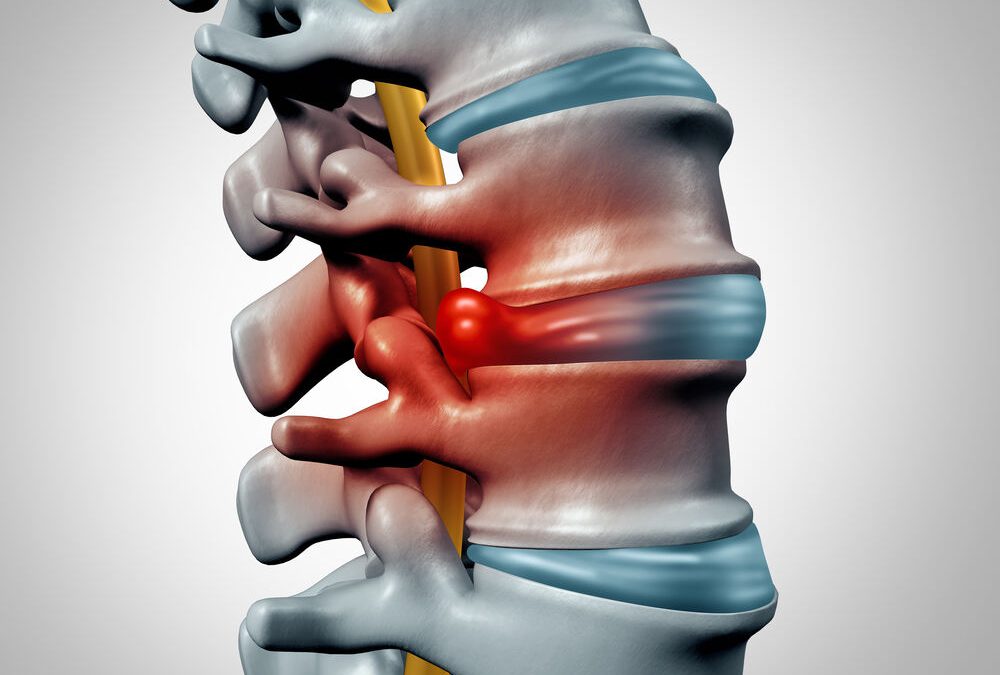Slipped discs are also commonly referred to as:
- Herniated discs
- Bulged discs
- Ruptured discs
However you choose to name them, slipped discs are never fun. They are, in fact, usually more than a little bothersome, resulting in localized or radiating pain, numbness, and tingling.
But are they serious, and how do you treat them? Here’s what you need to know…
How & Why Slipped Discs Happen
Your spine is composed of vertebrae (bones) cushioned by discs. These discs contain a tough outer shell called the annulus, and a soft, gelatinous interior called the nucleus.
Slipped discs occur when “a fragment of the disc nucleus…is pushed out of the annulus, into the spinal canal through a tear or rupture in the annulus”. This can happen in anywhere from the lower back and into the neck.
Why do slipped discs happen? As is the case for many bodily systems, spinal discs deteriorate slowly over the course of a person’s lifetime.
That said, they can also occur due to improperly lifting heavy things. There may also be a hereditary component to slipped discs.
Painful as herniated discs can be, they’re also a fairly common result of the aging process.
What Does a Slipped Disc Feel Like?
Because there’s limited space in the spinal canal, the resulting bulge often puts pressure on spinal nerves, which can cause minor pain in some patients and very severe pain in others.
This pain often includes the following:
- Arm or leg pain
- Numbness or tingling
- Weakness
Sometimes, if they don’t push up against a nerve, herniated discs can also be asymptomatic
Do I Have a Muscle Strain or Slipped Disc?
Acute lower back pain, also known as lumbago, is often confused with a slipped disc. So how do you know which you’re experiencing, muscle pain or slipped disc pain? Here are some telltale slipped symptoms, according to Spine-Health.com:
- Pain that occurs while sitting down
- Pain that radiates into your leg (sciatica)
- Pain that worsens with activities like lifting or pushy heavy things, coughing or sneezing, or bending
Slipped Disc Treatment Options
In some cases, surgery is required. But in many cases, when experiencing a slipped disc in your back, you can remedy the disc with gentle exercise and/or intentional rest.
If your slipped disc symptoms are too severe to carefully exercise, which is the first recommended course of action, then you may find that lying down on your back with your feet elevated on a raised platform so your knees are bent at a ninety-degree angle most comfortable.
Discover Your Bulged Disc Treatment Options
There are many reasons you might be experiencing pain other than a slipped disc or muscle strain. And there are potentially just as many courses of treatment for your condition.
Still not sure why you’re experiencing pain or what courses of action you can take to feel better ASAP? Let the spine experts have a look; schedule your next diagnostic appointment today!



Recent Comments